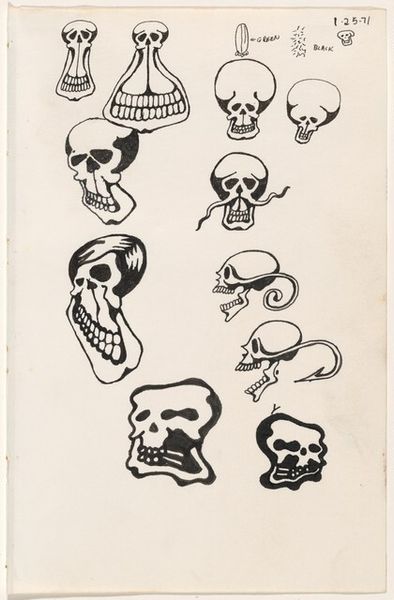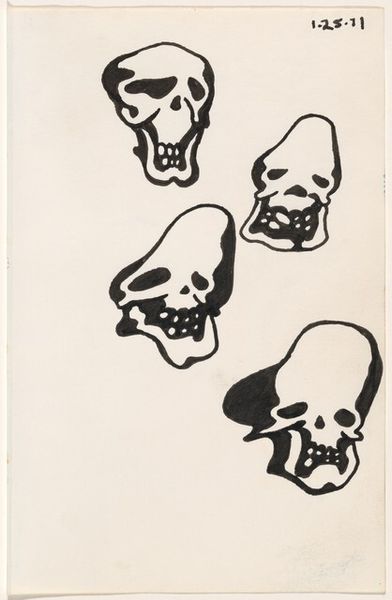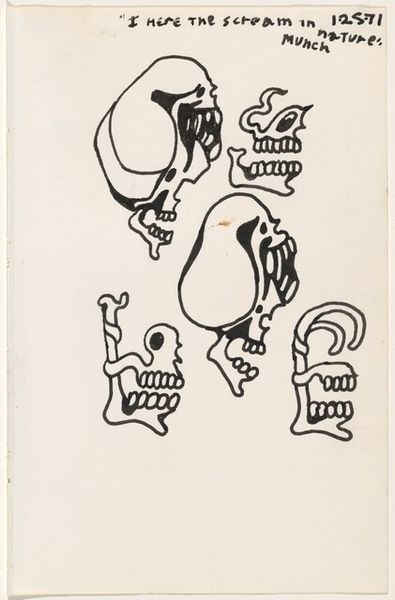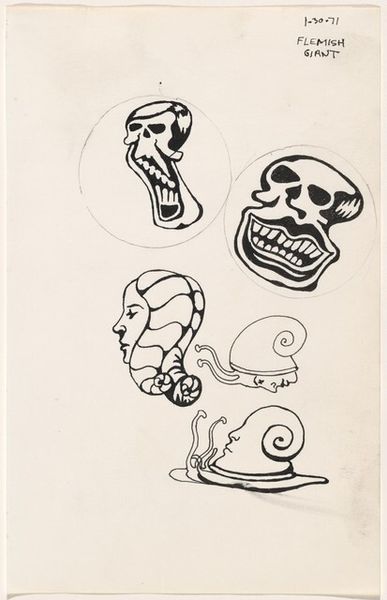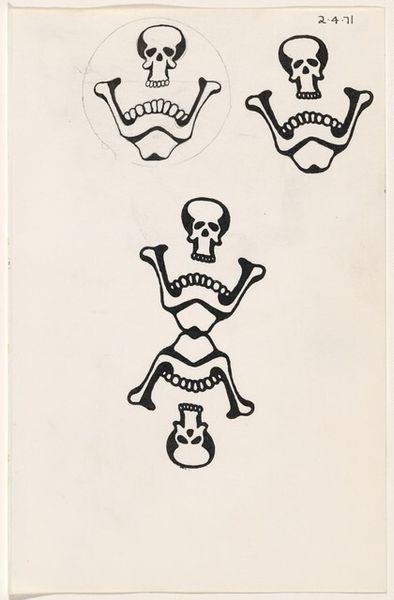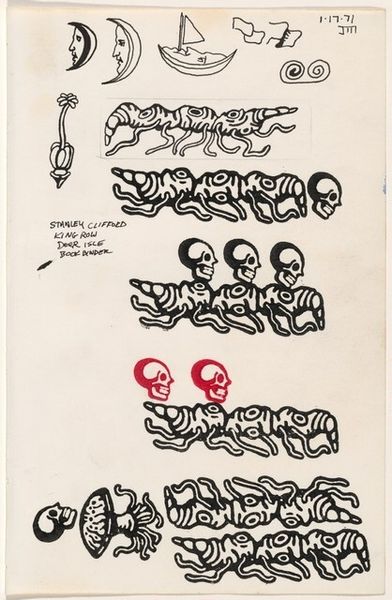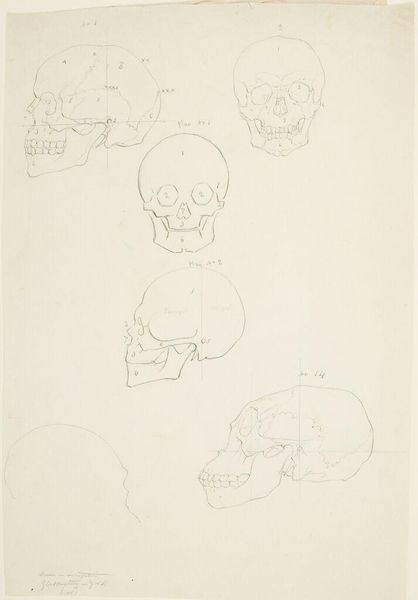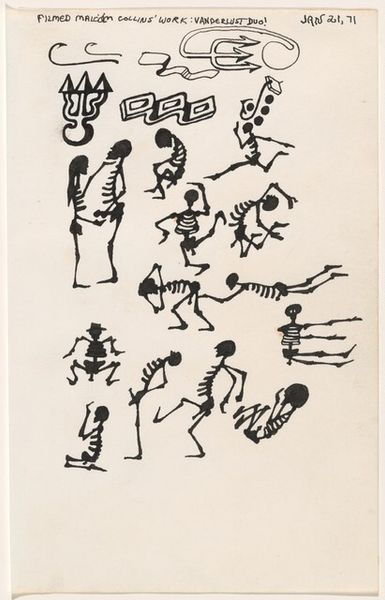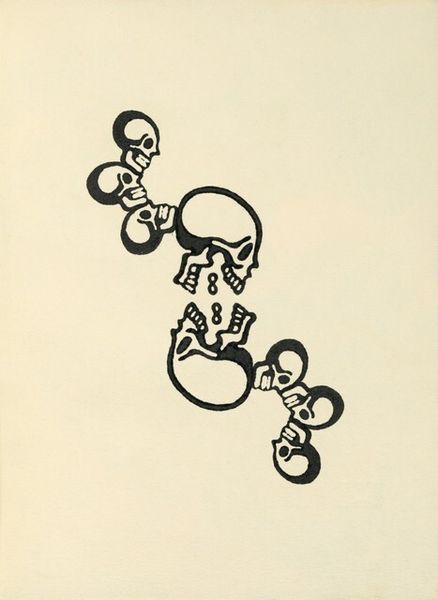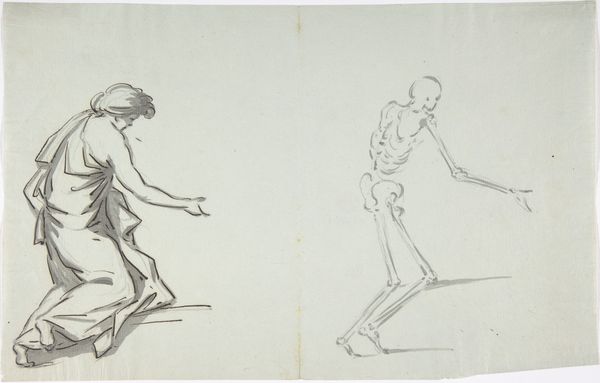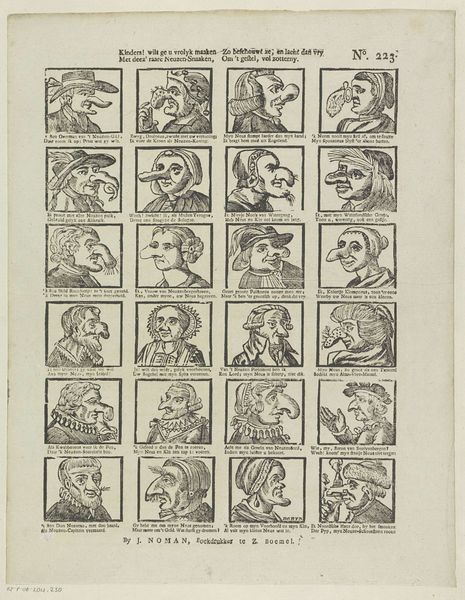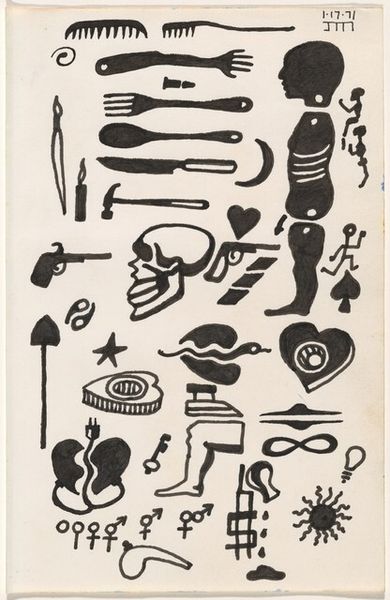![Untitled 1-25-71 [study for "tattoo" book] by James McCracken Jr.](/_next/image?url=https%3A%2F%2Fd2w8kbdekdi1gv.cloudfront.net%2FeyJidWNrZXQiOiAiYXJ0ZXJhLWltYWdlcy1idWNrZXQiLCAia2V5IjogImFydHdvcmtzLzJjNGFjZjBkLWMwMzgtNDE3My04ODZjLTcyNjIxYmYxOTdjMi8yYzRhY2YwZC1jMDM4LTQxNzMtODg2Yy03MjYyMWJmMTk3YzJfZnVsbC5qcGciLCAiZWRpdHMiOiB7InJlc2l6ZSI6IHsid2lkdGgiOiAxOTIwLCAiaGVpZ2h0IjogMTkyMCwgImZpdCI6ICJpbnNpZGUifX19&w=1080&q=75)
drawing, ink
#
drawing
#
contemporary
#
figuration
#
ink
Copyright: National Gallery of Art: CC0 1.0
Curator: Here we have James McCracken Jr.'s "Untitled 1-25-71," a study completed in 1971, which the artist created as part of a larger project that would later be known as the "tattoo" book. Editor: My immediate impression is one of raw, stark graphic quality. The composition strikes me as visually intriguing, with these simplified skull figures, boldly outlined in ink, almost dancing on the page. Curator: Indeed, what may seem simplistic is quite deliberate. McCracken, through the lens of this book project, grapples with counter-cultural expressions of the late 20th century, tattoo culture. The "tattoo" book highlights a fascination with subcultures and alternative forms of identity and community. Editor: I can certainly perceive that fascination with subculture through the application of that stark black ink. The bold lines that build up the outline seem to echo some visual quality inherent to ink illustration, like a modern cave painting with semiotic reduction to the fore. Curator: Absolutely. These images possess the same graphic directness and permanent visual statements. Further, these are, after all, studies for tattoos. One might interpret this work as McCracken's exploration of life and mortality reflected in body art. Tattooing carries such weight, because as humans we must physically commit to an aesthetic choice, similar to the irrevocable decision of our mortality. Editor: You raise a very valid point concerning its bold and committed quality, but the composition remains somewhat playful to my eye. This work lacks the depth of field one typically perceives. The negative space is more so its own compositional device; one is not focused in the conventional sense. This contributes to the overall stark impact on the canvas. Curator: And the seeming lighthearted nature should not dismiss the more significant historical contexts of tattoos—body modifications were used historically for purposes like signifying rank, allegiance, or spiritual beliefs. Thus, "Untitled 1-25-71" might suggest both cultural resilience and perhaps even critique surrounding conventions related to body image. Editor: In conclusion, I find it striking how the application and bold visual impact of the medium amplify its content so. It is stark. It makes you look. Curator: Indeed. This piece underscores how artistic creation is a reflection of human experience and cultural trends. It pushes viewers to reassess existing notions and histories surrounding societal change through identity.
Comments
No comments
Be the first to comment and join the conversation on the ultimate creative platform.
